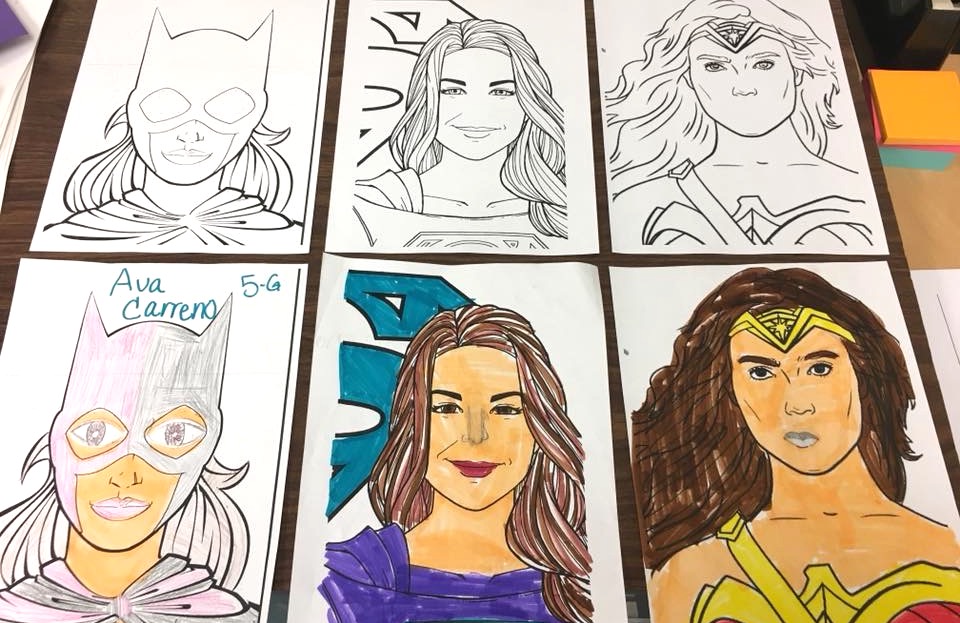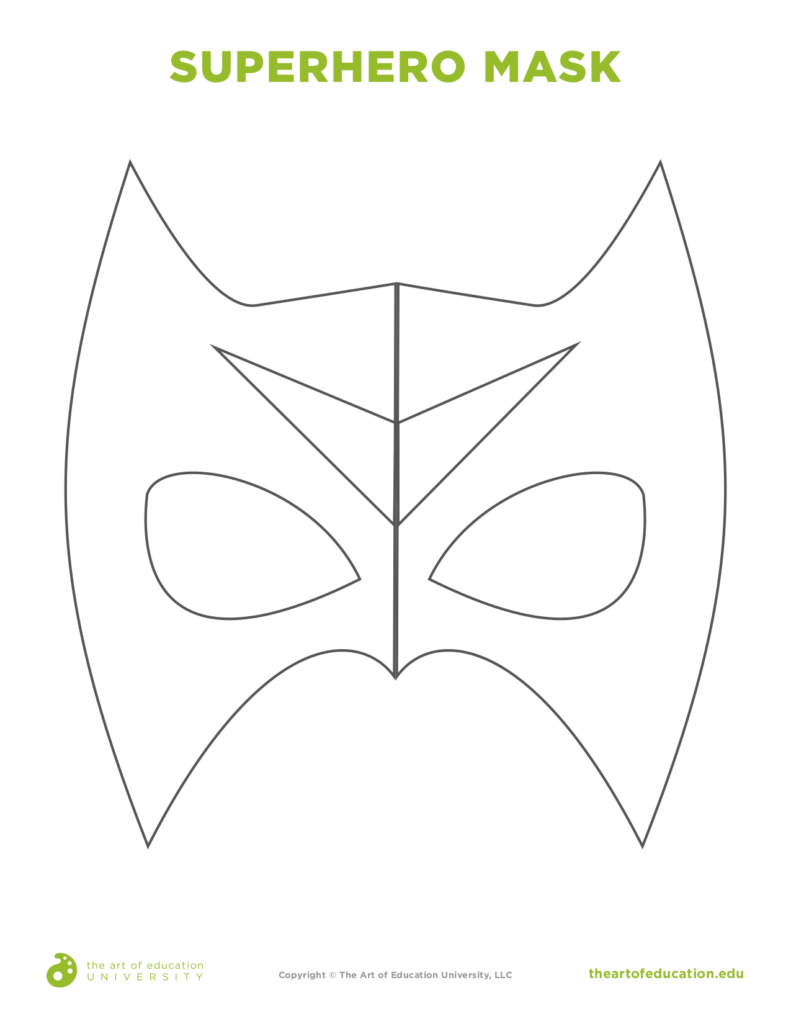Portraits are a staple of almost every art curriculum. There are several ways to approach this project at each grade level, but one thing remains the same. Many students are extremely intimidated by creating portraits. When you first announce the lesson or activity, you may have some students who immediately shut down because they already feel like they can’t succeed. As art teachers, we have to find ways to help these students with their portrait struggles. The task can seem daunting at times, but there is a fun way to help them out!

Practice Makes Perfect
Just like playing sports or learning a musical instrument, students will only build on their drawing skills through practice. However, practice isn’t always the most appealing activity for our students. They can be impatient or self-conscious while seeing the work of their peers. They want that instant gratification of drawing success but without the time and effort needed to get there.
Art teachers can give demonstrations and step-by-step resources for students to use when drawing portraits. Breaking down the steps by each facial feature is helpful and can make the task easier. However, even with excellent instruction and tools, students still need to practice. If a student doesn’t want to practice and help themselves improve, the art teacher has to find a way to best motivate the student.
Practice Can Be Fun!
To motivate students to practice, art teachers have to find a way to make it fun and engaging. Timed drawings, changing materials, and allowing students to work with a partner are all ways art teachers can help make practice more engaging. One other way to approach portrait drawing practice is to ask your favorite superheroes for some help!
A traditional way of practicing how to draw the eye would be to repeatedly sketch it in a sketchbook. However, students may find the practice easier if they had a familiar face to work with. Look for coloring sheets of different superheroes online. You can do this through a Google image search and selecting line drawing in the search tools. Once you find a quality image, just erase the superhero’s eyes using Adobe Photoshop or even a simpler software like Microsoft Paint. With the eyes of the superhero erased, you’ve just created a great resource for student practice!

You can do this with each facial feature like the nose, mouth, etc. Students will have the rest of the superhero’s face to reference size and proportion when practicing the specific feature. Try finding a variety of superhero characters both male and female to provide your students with as much representation as you can.
Identify Challenges and Reteach
Prior to each feature, give students a demonstration. Their initial attempt can be in their sketchbooks or on scratch paper. As they follow along with your demonstration, they will naturally make mistakes. Assure them they will have an opportunity to try again independently. Once they’ve had some initial instruction, pass out your awesome superhero resource. Students will be much more excited to practice drawing the eyes again.

While they’re working on their superhero portrait drawing, you can scan the room and check on their progress. You’ll be able to point out things like size, proportion, and spacing. Remind students of specific steps in your demonstration or instructional handouts. Give students who need it some one-on-one instruction. Reteach specific steps they may be struggling with or miss completely. This superhero resource is for practice, but it also serves as an assessment for you to see how well they picked up your instruction. You can identify any challenges and reteach students who need extra help. Your students who pick the process up quickly can add shading and details to the superhero while you help others.

Take one class period for each facial feature. This may seem like a lot of time to devote to portrait drawing, but it will definitely pay off! Give your students a chance to practice and explain the importance of doing so. With the time you’re devoting to each feature, you’re also allowing yourself time to assess and reteach.
Build Confidence and Eliminate Intimidation
More than just providing a fun way to practice, you will help students build their confidence in portrait drawing. They’re engaged because it’s something familiar and different than what they’ve done before, but they’re learning along the way. You’re getting a chance to check on their progress and help them succeed. By breaking the process into individual steps and approaching a different feature each day, you make the task less intimidating and more manageable for students.

As they improve their drawing skills with this fun and engaging superhero activity, students start to see they are capable of drawing portraits. Before, some students have thought they simply couldn’t do it, but you’re there to help them along the way. There’s nothing like hearing a student rejoice in learning a new skill. You may see them practicing more and more because they’re thrilled and proud of their progress. If you can find ways like this to make practice more engaging, you’ll be able to help your students succeed.
Get your students started with these downloads!
Final Thoughts
Once your students have mastered these portrait drawing basics, they’re ready to approach those great portrait projects you have planned for them! You can focus on sharing the elements and principles, art history components, and any other topics that go along with your lesson. Your students will feel much more confident and ready to put their newfound skills to work. You can help each student develop further as they work on their projects. Be sure to keep initial sketches and the superhero practice sheets to document how far they’ve come. This would make for a great pre and post-assessment or student growth evidence, too!
What is your favorite portrait lesson?
How do you make drawing practice fun in your art room?
Do you have any portrait drawing tips or hacks?
Magazine articles and podcasts are opinions of professional education contributors and do not necessarily represent the position of the Art of Education University (AOEU) or its academic offerings. Contributors use terms in the way they are most often talked about in the scope of their educational experiences.






